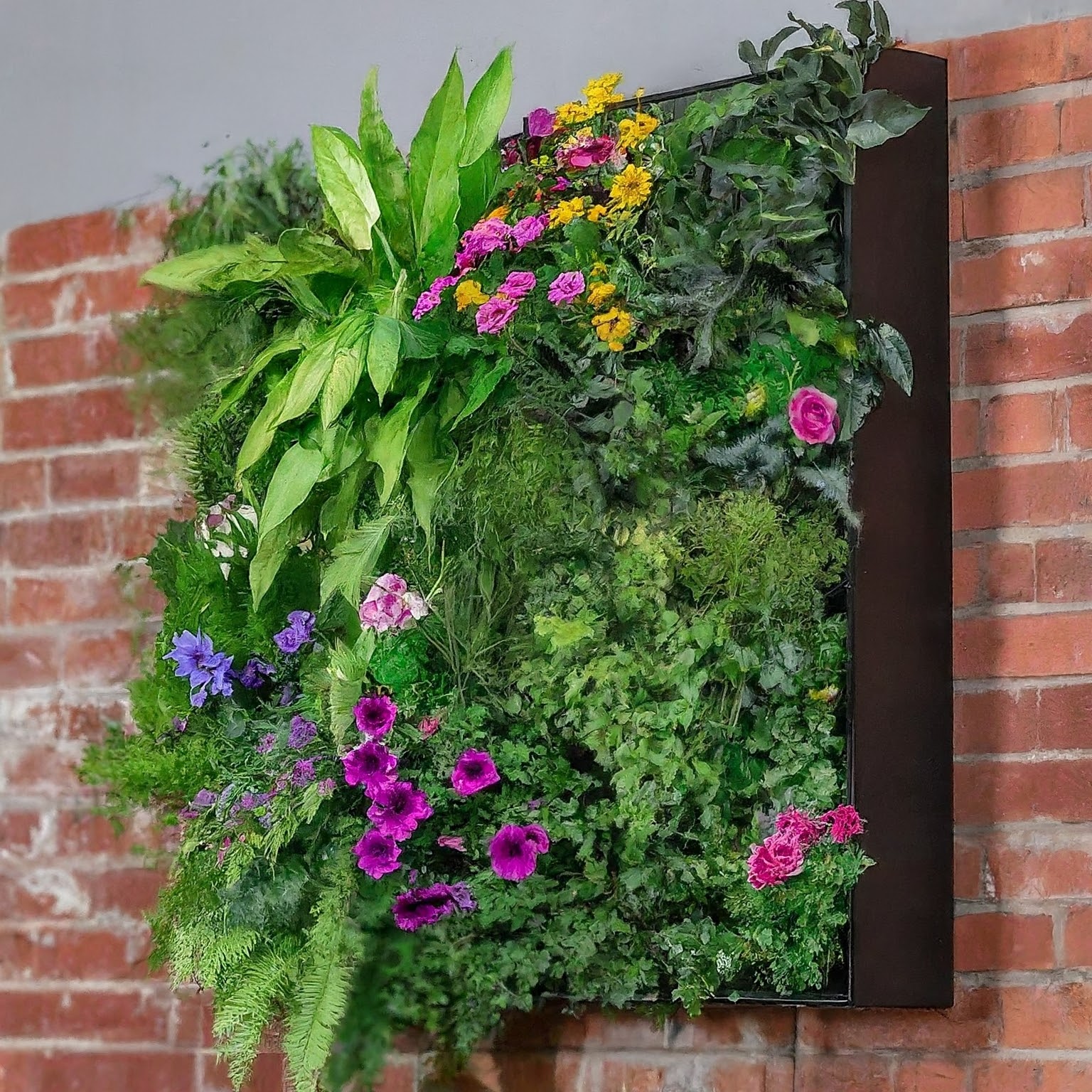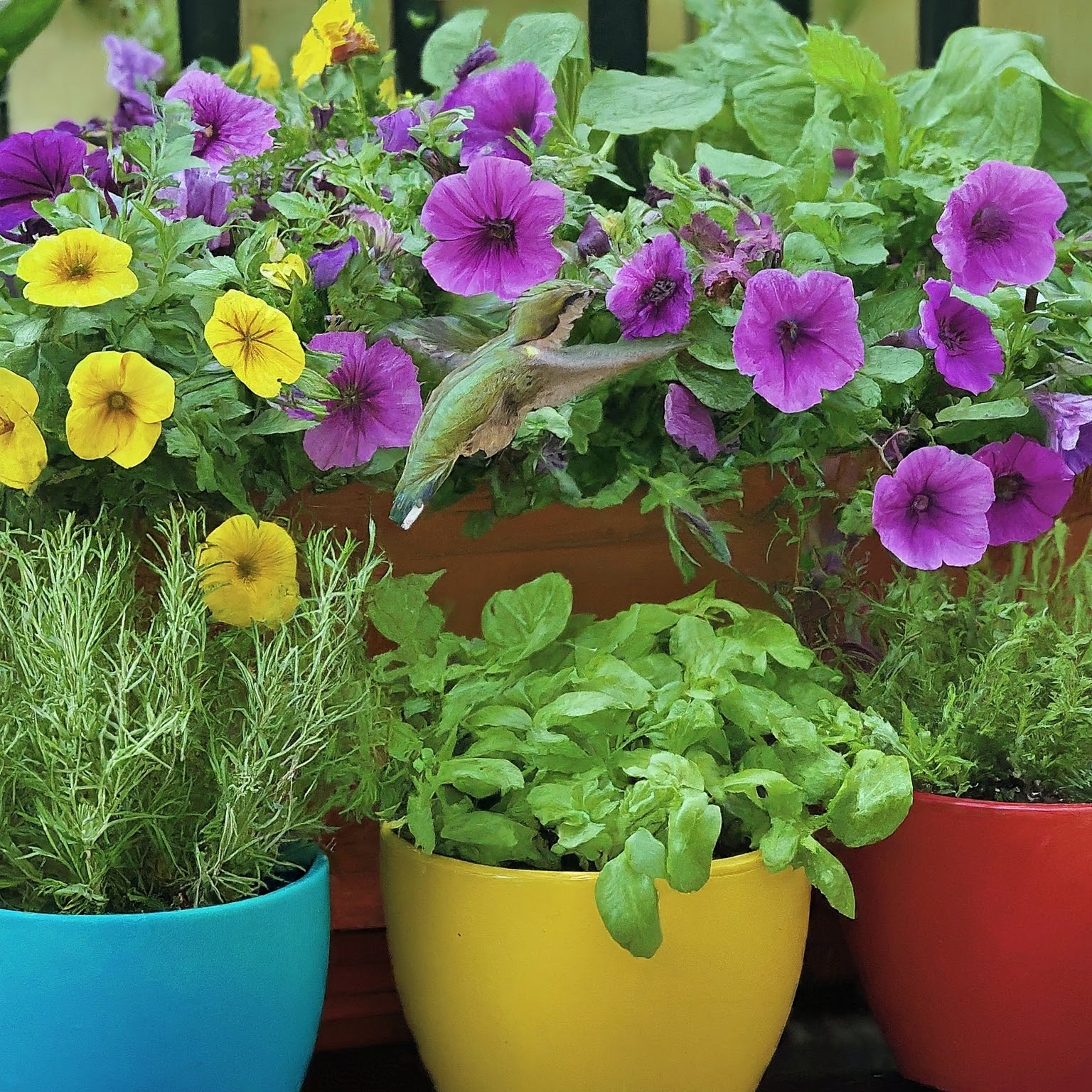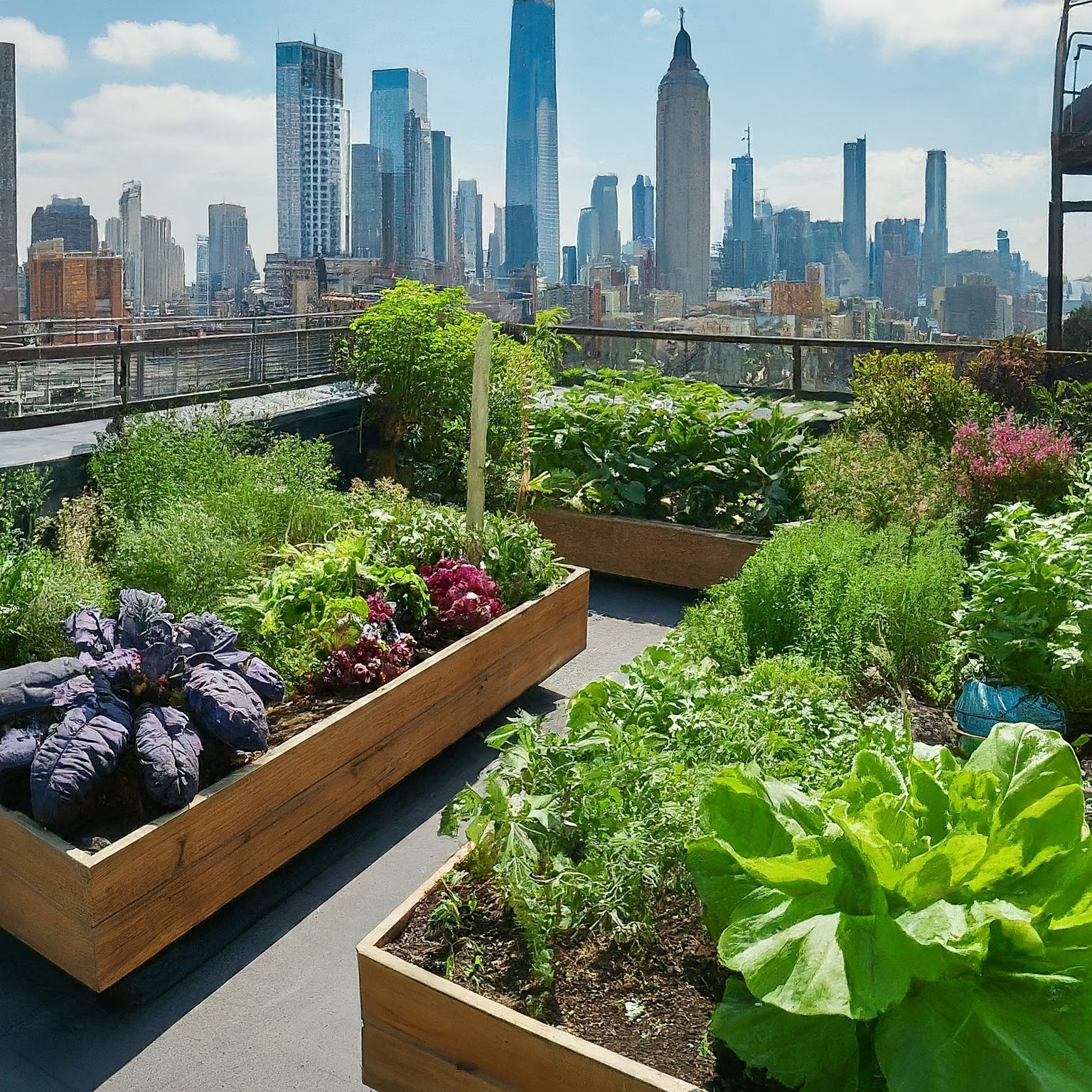Meet Mary Reynolds, Your Urban Gardening Guru!
Mary Reynolds, a passionate advocate for urban green spaces, has spent the last decade transforming concrete jungles into vibrant ecosystems. With a background in environmental science and a master’s degree in urban planning, Mary is here to share her expertise on the power of urban gardens.
Headings
- Concrete Jungles Transformed: Unveiling the Benefits of Urban Gardens
- Cultivating a Greener City: The Environmental Impact of Urban Gardens
- From Isolation to Connection: Building Community Through Urban Gardens
- A Feast for the Eyes and the Soul: The Mental Health Benefits of Urban Gardens
- Getting Your Hands Dirty: Types of Urban Gardens and How to Get Started
- 5.1 Balcony Bliss: Container Gardens for City Dwellers
- 5.2 Reaching for the Sky: Vertical Gardens for Compact Spaces
- 5.3 Greening the Rooftop: Rooftop Gardens for Urban Farmers
- 5.4 Community Spirit: Joining a Community Garden
- Let’s Get Growing! Resources and Tools for Urban Gardeners
- Conclusion: Transforming Your City, One Seed at a Time
Benefits of Urban Gardens
| Benefit | Description |
|---|---|
| Environmental Impact | Reduces air pollution by absorbing pollutants and releasing oxygen, combats the urban heat island effect, promotes biodiversity by providing habitat for pollinators. |
| Community Building | Fosters social interaction and creates shared green spaces, encourages collaboration on garden projects and knowledge sharing. |
| Mental & Physical Health | Reduces stress and anxiety by providing connection to nature, promotes physical activity through gardening tasks, provides access to fresh, healthy produce. |
| Aesthetics & Beautification | Enhances cityscapes with vibrant green spaces, improves property values, creates a more inviting atmosphere for residents and visitors. |
Traditional Garden vs. Urban Garden
| Feature | Traditional Garden | Urban Garden |
|---|---|---|
| Location | Suburban or rural areas with large plots of land | Urban environments with limited space (rooftops, balconies, vacant lots) |
| Space | Typically large plots allowing for diverse plant selection | Often limited space, requiring creative solutions like vertical gardens and container gardening. |
| Plants | Wider variety of options due to more space and varied microclimates | Focus on plants suited to specific microclimates and limited space (drought-tolerant, compact varieties). |
| Maintenance | May require significant time and effort for upkeep of large areas | Can be adapted to require less time and resources with proper planning (container gardens, self-watering systems). |
Unleashing the Power of Urban Gardens
Urban gardens are more than just splashes of green amidst the concrete sprawl. They hold the potential to revolutionize our cities, transforming them into healthier, more resilient, and vibrant ecosystems.
Cultivating a Greener City
The environmental benefits of urban gardens are a breath of fresh air for our cities. They act as natural filters, reducing air pollution by absorbing harmful pollutants like carbon monoxide and nitrogen dioxide, and releasing oxygen back into the atmosphere. This translates to cleaner air for city dwellers, particularly crucial in areas with high traffic congestion. Additionally, urban gardens help mitigate the urban heat island effect, a phenomenon where cities experience higher temperatures than surrounding rural areas. This temperature difference is caused by the abundance of dark surfaces like asphalt and concrete that absorb and retain heat. Urban gardens, with their cooling effect from vegetation, can help regulate temperatures and make cities more comfortable during hot summer months.
But the benefits extend beyond just temperature regulation. Urban gardens provide crucial habitats for pollinators like bees and butterflies, which are essential for plant reproduction. In a world facing declining pollinator populations, urban gardens offer a vital refuge for these important insects, promoting biodiversity in the heart of the city.
From Isolation to Connection
Urban gardens foster a sense of community by creating shared green spaces where residents can connect and interact. Community gardens, for example, bring people together from all walks of life, fostering a sense of belonging and collaboration. Whether it’s sharing gardening tips, swapping seeds with fellow green thumbs, hosting potlucks to celebrate the harvest, or simply enjoying the outdoors together, urban gardens provide a platform for building stronger social connections within the city. These social connections can combat feelings of isolation often experienced in urban environments and contribute to a more vibrant and supportive community spirit.

A Feast for the Eyes and the Soul
The mental health benefits of urban gardens are undeniable. Studies have shown that spending time in nature, even in a small urban oasis, can significantly reduce stress, anxiety, and depression. The repetitive motions of gardening, like weeding and planting, can be meditative, providing a welcome escape from the constant stimulation of city life. Witnessing the beauty of nature unfold, from the vibrant colors of flowers to the satisfying growth of vegetables, provides a sense of accomplishment and a connection to the natural world, both of which are crucial for mental well-being.
Urban gardens can also be a source of pride and joy. Nurturing plants from seed to harvest offers a sense of accomplishment and a reminder of one’s ability to cultivate life. Sharing the bounty of your urban garden with friends, family, or even neighbors fosters social connection and strengthens the feeling of community.
Getting Your Hands Dirty: Types of Urban Gardens and How to Get Started
There’s an urban garden style for everyone! Don’t let limited space deter you; with a little creativity, you can cultivate your own urban oasis. Here are some popular options to get you started:
Balcony Bliss: Container Gardens for City Dwellers
Even the tiniest balcony can be transformed into a flourishing garden. Container gardens offer incredible flexibility, allowing you to experiment with different plant combinations and create a vertical garden effect with hanging planters. Choose brightly colored pots to add a pop of personality to your urban balcony retreat.
Tips for Balcony Gardens:
- Select plants suited to the amount of sunlight your balcony receives.
- Opt for dwarf or compact varieties of vegetables, herbs, and flowers.
- Utilize self-watering containers to minimize maintenance needs.
- Invest in a sturdy balcony railing plant stand to maximize space.
Reaching for the Sky: Vertical Gardens for Compact Spaces
Vertical gardens are a space-saving solution for urban gardeners. They allow you to utilize walls and fences to create lush green spaces. Pocket planters and hanging baskets are great options for vertical gardens. You can even get creative and repurpose old pallets or shoe organizers for a unique and sustainable vertical garden.
Tips for Vertical Gardens:
- Choose lightweight plants that don’t require deep root systems.
- Ensure proper drainage for your vertical planters.
- Select a sturdy mounting system for your vertical garden, especially if it’s on an exterior wall.
- Consider incorporating climbing plants like vines or ivy for a cascading effect.
Greening the Rooftop: Rooftop Gardens for Urban Farmers
Rooftop gardens offer a surprising amount of space for urban agriculture. They can be as simple as a collection of potted plants or even include raised garden beds for growing vegetables and herbs. Rooftop gardens not only provide fresh produce but also help insulate buildings, reducing energy costs.
Tips for Rooftop Gardens:
- Ensure your roof can handle the weight of a garden, including soil, plants, and water.
- Invest in proper waterproofing and drainage systems for your rooftop garden.
- Choose plants tolerant of full sun and wind exposure, common characteristics of rooftop environments.
- Select lightweight materials for raised garden beds to minimize weight on the roof.

Community Spirit: Joining a Community Garden
Community gardens offer a unique opportunity to connect with fellow green thumbs and learn from experienced gardeners. These shared green spaces provide a sense of belonging and collaboration, fostering a supportive community spirit.
Benefits of Joining a Community Garden:
- Access to larger plots of land for growing a wider variety of plants.
- Opportunity to learn from experienced gardeners and share knowledge.
- Sense of community and social connection with fellow garden enthusiasts.
- Potential cost savings by sharing tools and resources.
Finding a Community Garden:
- Search online directories of community gardens in your area.
- Contact your local parks and recreation department for information on community garden programs.
- Look for community gardens near community centers or public libraries.
Let’s Get Growing! Resources and Tools for Urban Gardeners
Feeling inspired to transform your corner of the city into a vibrant green space? Here are some resources and tools to equip you on your urban gardening journey:
-
Online Resources:
- The American Community Gardening Association (https://www.communitygarden.org/) offers a wealth of information on starting and maintaining a community garden, including resources on finding a garden near you, best practices for different gardening styles, and educational materials.
- The National Gardening Association (https://garden.org/) provides a comprehensive library of resources for all types of gardening, with dedicated sections on urban gardening tips and tricks. They also offer online courses and webinars on various gardening topics.
- Local Cooperative Extension Services: Most states have Cooperative Extension Services, which are a partnership between universities, the U.S. Department of Agriculture, and local governments. These services offer research-based information on gardening practices specific to your region and climate.
-
Books and Magazines:
- Check your local library for books and magazines dedicated to urban gardening. These resources can provide in-depth information on plant selection, container gardening techniques, and creative solutions for maximizing space in an urban environment.
- Popular urban gardening publications include “Vertical Vegetables & Fruits” by lauri weinberg, “The Complete Rooftop Gardener” by Edwyn Enfield, and “阳台花园入门” (阳台花园入门 translates to “Balcony Gardening for Beginners” in Chinese) by Li Min.
-
Seed Banks and Local Nurseries:
- Support local seed banks and nurseries that specialize in plants suited to your region’s climate. The staff at these establishments can offer valuable advice on plant selection based on your specific needs and available space. They can also recommend varieties that thrive in containers or vertical gardens.
Conclusion: Transforming Your City, One Seed at a Time
Urban gardens are a powerful force for positive change in our cities. By harnessing their environmental, social, and mental health benefits, we can create thriving ecosystems that contribute to a more sustainable, connected, and vibrant urban future. So, grab your seeds, get your hands dirty, and start cultivating your own urban oasis. Remember, every seed planted, every vegetable grown, and every pollinator attracted contributes to a greener and healthier city for all.



